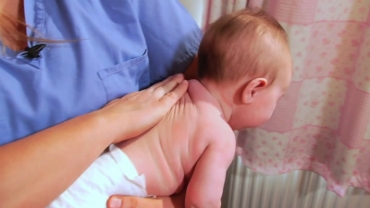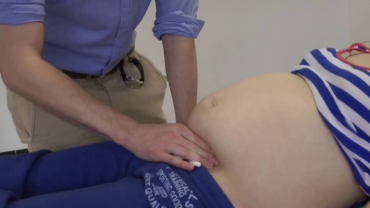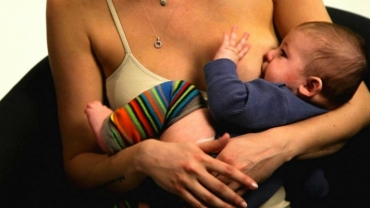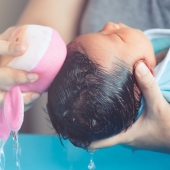Mothers left undisturbed will instinctively cuddle their babies and put them to their breast. Babies cuddled in skin-to-skin contact become calm, pink and alert. All babies benefit including those preterm, sick or born by caesarean section. Aside from the natural bond it fosters, the First Embrace helps transfer warmth, placental blood, protective bacteria, and through colostrum, essential nutrients, antibodies and immune cells to protect from infection. Babies adapt better to extra-uterine life.
The components of The First Embrace are:
• Immediate and thorough drying
• Immediate skin-to-skin contact
• Clamping the cord after pulsations stop, cutting the cord with a sterileinstrument
• Initiating exclusive breastfeeding when cues occur (such as drooling, tonguing, rooting, biting hand).
Many inappropriate practices interfere with the baby’s ability to adapt and feed well. Too often, unnecessary suctioning, immediate cord cutting and delayed drying increase the risk of delayed fetal-to-newborn circulatory adjustments, infection, breathing problems, hypothermia, anaemia, acidosis, coagulation defects, brain haemorrhage and trauma. Too often, newborn infants are distressed, hypothermic and exposed to dangerous bacteria because of separation from the mother.
The first breastfeed is usually delayed because of incorrect sequencing of actions immediately after birth. Routine care such as vitamin K, eye prophylaxis, immunizations, examination and weighing should be delayed until after the first breastfeeding. Bathing should be delayed until after 24 hours of life.
The First Embrace campaign is about early essential newborn care. The World Health Organization (WHO) with the United Nations Children's Fund (UNICEF) promotes simple practices such as immediate skin-to-skin contact between mother and child after birth that could save the lives of over 50,000 newborns every year.
- 14 views













